Galactic Civilizations III PC Review: Watering My Tech Trees
Stardock returns to the 4X genre with a rebuilt GalCiv that's just hungering for your new rig.
This article first appeared on USgamer, a partner publication of VG247. Some content, such as this article, has been migrated to VG247 for posterity after USgamer's closure - but it has not been edited or further vetted by the VG247 team.
The first time I loaded up the final version of Galactic Civilizations III, I won. It took a long time and I had a few breaks, but start to finish, I was on a roll. Good planet placement, a decent amount of resources to work with, and the right research path kept me ahead of my enemies. I stayed ahead and cruised my way to an ascension victory.
That's pretty rare for me, as I rarely finish games in 4X strategy titles. I tend to burn out of the later third or fourth of any game. I don't really play to win, I just play to play, if that makes sense. I like outmaneuvering, out-building, and out-researching my competition, and in many 4X strategy titles, that last bit is generally clean-up more than anything else. You've already won or lost and your opponent either doesn't realize that or is drawing things out.
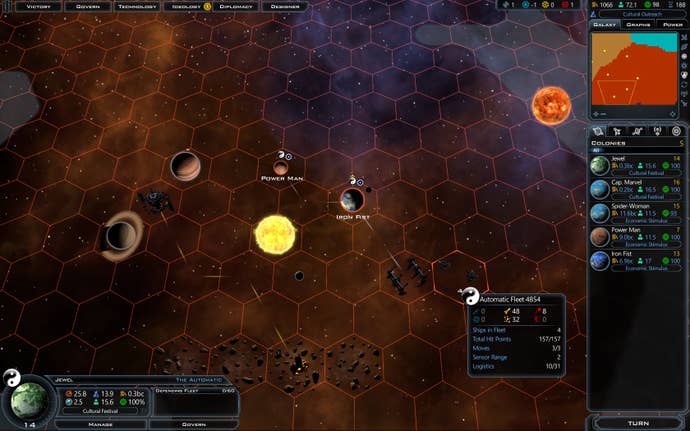
I mention this because I want you to understand that if you've played Galactic Civilizations II, you're largely prepared for its sequel. Stardock built this new title from the ground-up for new technology, but it feels like an upgraded, shinier version of what came before. Sure, there's new stuff here, but the core and heart of Galactic Civilizations still remains. Returning veterans will slide into this like a glove.
Frosting on a New Cake
What's changed?
First up, Galactic Civilizations III is 64-bit only. Stardock says this allows for bigger galaxies and smarter AI, but the end result is it's time for some of you to upgrade. More and more PC games are beginning to go 64-bit only. Multiplayer is now on the table from the beginning, which is very exciting for some players out there.
The entire map in now built on hex grids, which are a bit more manageable than the tilted squares available in GalCiv II, especially when it comes to defense and fleet management. This is particularly important when you realize the game has ballooned up drastically, allowing far more simultaneous races per game and much bigger galaxy maps. Now that Stardock's got more space, what do they do with it? More stuff! Shipyards are now on the map and can be tied to multiple planets and customizable starbases let you fill out gaps in your empire while also providing defense or mining resources.
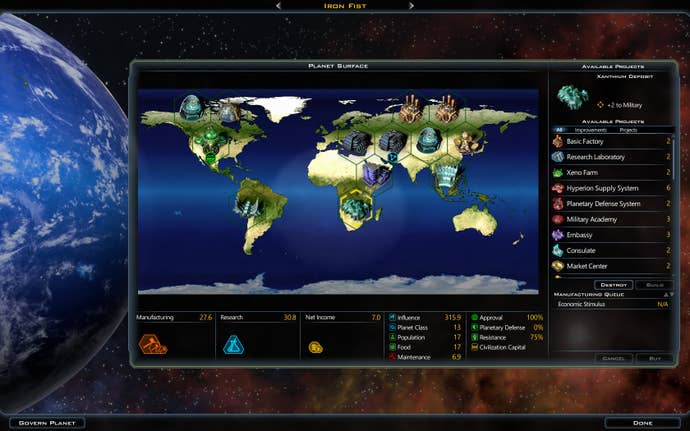
In GalCiv II, it behooved you to build planets focused in a particular direction: research planets, industry planets, influence-building planets. In this game, that idea is magnified. When you dive down into your individual planets in Gal Civ III, where you place improvements matters now, because each building provides bonuses to adjacent buildings. You have to figure where to place that Research Building or Xeno Hospital, because they make each other stronger. You may keep that line of hexes - planets have switched to hexes too - open for a line of factories. Planning efficient colonies is no longer just a matter of having the right buildings somewhere on the planet.
There are new race-specific tech trees - a feature that returns from the GalCiv II expansion Twilight of the Arnor - that reinforce the feel of each of the game's canon races, but there's also new Optimizations. These are areas in the tech trees where you have to choose between one of two or three different options for that specific tech. Once you've chosen one, the other options are locked out. Take Armor Optimization for example: Would you rather have stronger armor, low-cost armor, or armor with reduced mass? These optimizations are sprinkled liberally through each tree, providing players with a better chance to differentiate themselves.
There's also the new Ideology system. Mirroring a similar additions in other 4X strategy titles, you're given choices upon settling on certain planets or discovering other celestial bodies. Those choices will affect planets immediately, you'll also be given points in one of three alignments: Benevolent, Pragmatic, and Malevolent. When you level-up in Ideology, you can pick from Traits that provide bonuses to your overall civilizations. Free ships, free morale, better weapons; it's all on the table in Gal Civ III's pseudo-RPG system. Your Ideology will also factor into diplomacy, as races from other ideologies will treat you with contempt and are more likely to declare war.
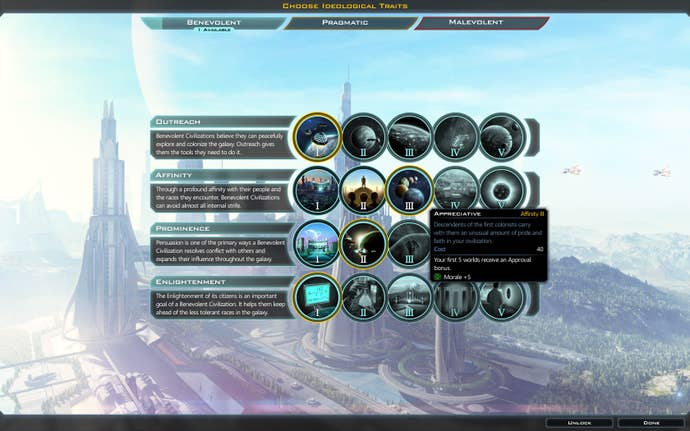
The layout of the UI is drastically improved. In fact, you can play quite well from the fully-zoomed out map view. And keeping track of your colonies, ships, research, and overall diplomatic state is much easier now. I wouldn't say everything is 100 percent intuitive for new players, but I can tell it's been re-thought in comparison to the previous title.
The ship combat viewer is far more robust this time around, to the point that I would occasionally watching ship-to-ship combat. I count that as a visual improvement more than anything else, but hey, I like whipped cream on my sundae as much as the next guy.
Make It Your Own
That's a whole host of new additions, but the best aspect of Galactic Civilizations III is customization. Oddly enough, I expect it will be the aspect that 80 percent of players won't even dig into.
The game starts off with eight races from the lore - which is rather low comparatively - but makes up for it by allowing for extensive race customization. You can change your portrait, your background, and your race icon; in fact, you can upload your own images for all of those if you have some artistic talent or can crop images in Photoshop. You can chose racial traits and which tech trees your custom race will use. You can even set what game factors your customized race prioritizes out of a set list.
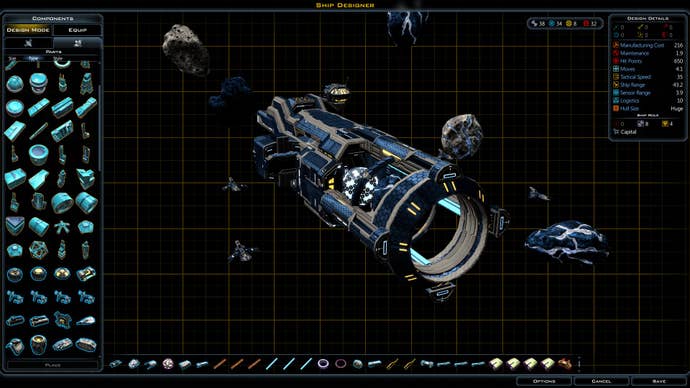
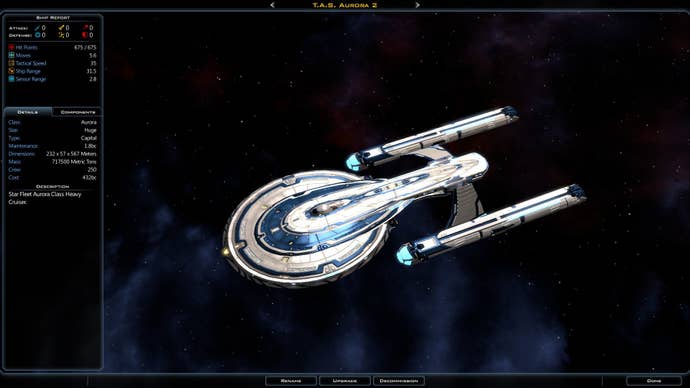

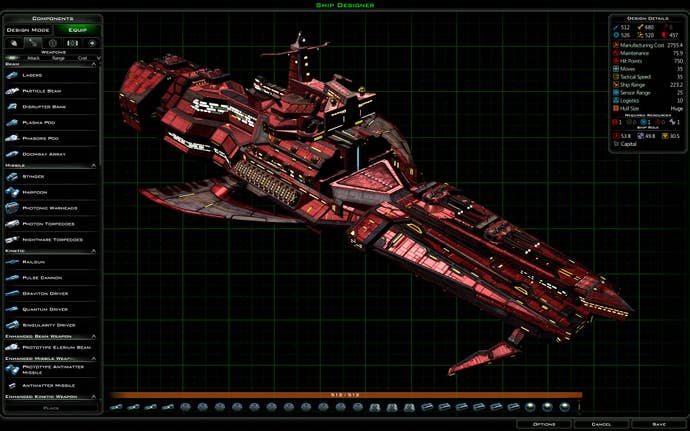
This customization extends to the robust ship designer, which allows you to build nearly anything. Yes, the parts you use affect the cost, weight, toughness, and firepower of your created ships. Yes, the game looks at what you've built to classify your creations as Assault, Interceptor, Escort, Guardian or Capital ships, which determines which commands you can give them in-game, but beyond that, the sky is the limit. If you decide you want to be Emperor Scrotum of the Dick Empire, you can spend hours making all the phallic stand-ins your mind can come up with.
If you've ever wanted to make the Star Trek universe go up against the Babylon 5 universe, you can absolutely do that, straight for the get-go. It'll take a whole lot of your time though. I can see some users playing with the ship designer a few times or making a custom races, but both are rather involved processes. It's like seeing all those elaborate creations others make in Minecraft, but once you're in-game, you realize you only have the time and inclination to build a hut. I made a few ships, but don't have the wherewithal to spend hours in the system. Looking forward to seeing what more enterprising players make though!
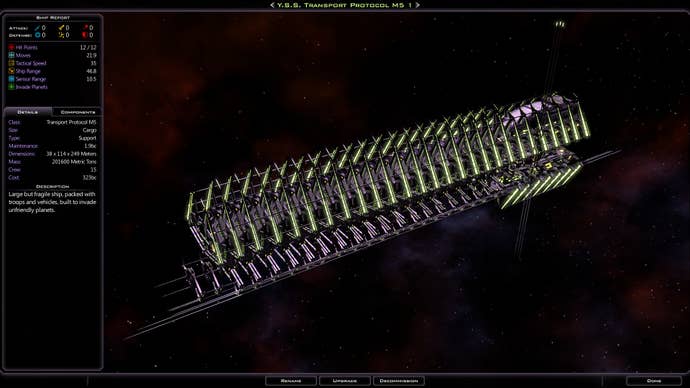
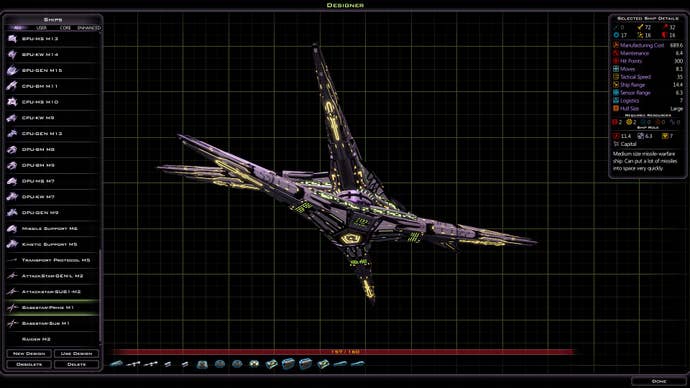

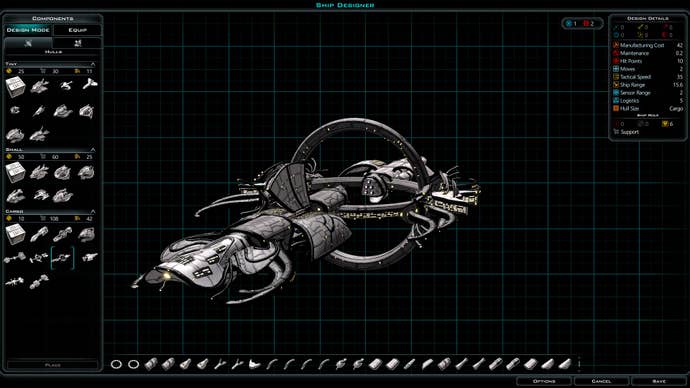
So Close to Heaven
There are features missing from Galactic Civilizations III. The political options - governments and espionage - are completely gone. Stardock has promised that they will return in the future, but not anytime soon. It's a loss I feel keenly, as I tend to avoid outright war, instead relying on trade and espionage to keep me ahead of everyone else.
One issue is simply an effect of the increased map size and may not bother hardcore Gal Civ players. As you're making your way towards the victory conditions - conquest, influence, research, turn limit, and ascension - games on the larger maps can stretch on for a long, long time. I'm talking days worth of playtime and you can expect big shifts, like when one race simply gives up and offers their assets to your enemy. Even beyond that, for some reason, the game actually gets slower once you reach the latter third, with turns taking longer to go through. I'm not sure that's something Stardock can fix, as it's potentially just the game having to handle a ton of different assets.
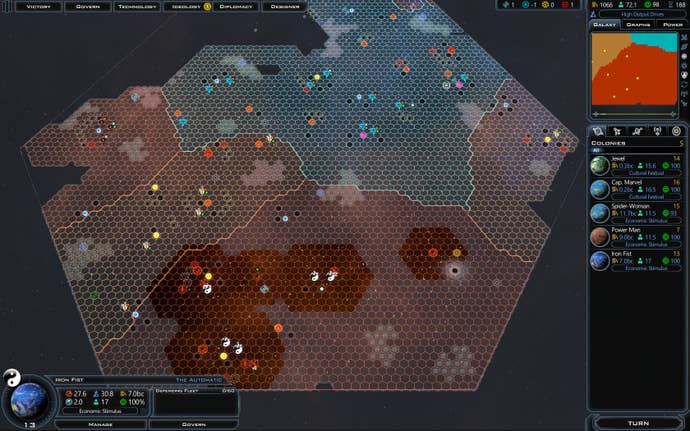
There's also a few niggling issues I'm sure Stardock will stamp out with time. Approval and morale can swing wildly at times without any discernable reason behind the shift. Part of that is due a penalty for having a large empire, but occasionally people just seem not cool with your rule for a little bit. Multiplayer has occasional sync, freezing, and crashing problems. There's no research queue in the game at all. I wish modding beyond race customization was as well-integrated as some other titles. (Cities: Skylines spoiled me.) And and and... Like I said, these are all pretty small issues that annoy me occasionally, but don't get in the way of Galactic Civilizations III being an great game.
If you love GalCiv or 4X strategy and have the rig to support it, pick up Galactic Civilizations III. (If you don't have the rig to support it, upgrade, because this game will chug hard otherwise.)
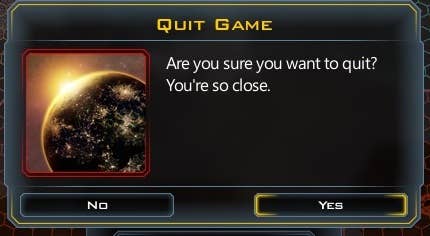
InterfaceStardock has revamped the interface with a better layout and more tooltips. Big improvement.
Lasting AppealIf this is your jam, you'll be playing for a long, long time.
VisualsIf you actually zoom in, you can see the effort Stardock put into the ships and other celestial bodies.
ConclusionGalactic Civilizations III is a great rebuild of a great series. The game is much bigger, multiplayer is here to stay, and the ship designer will keep some players occupied for hours. Is it missing a few features from previous entries? Sure, but GalCiv III is still worth your time and money.







